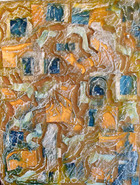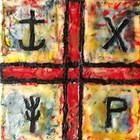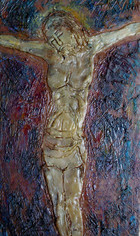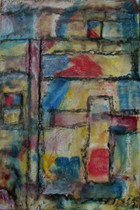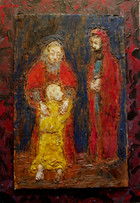Holy Wax Works
Wanting to know more about The Christ Pantocrator icon of St. Catherine's Monastery in Sinai, I discovered something, which launched me on a new sacred art project. The image was made by an ancient process called encaustic painting (derived from the the Greek word, enkaustikos, to burn), which used heat to seal color into wax and bind it to a surface. What's more, this Greco-Roman form of wax art has survived into the modern era, practiced by contemporary artists like Jasper John, who used the medium to make his famous American flag studies.
Just how wax art worked in practice remained a mystery to me, so I signed up for a summer course in encaustics, sponsored by Christians in the Visual Arts. With basic (patient!) instruction from Encaustic Artist Erica Grimm-Vance, I learned enough to begin making modern variations of this antique art form on my back porch in Cyprus, using a hot plate and heating iron.
Figuring out how to blend beeswax with damar resin and color pigments, while keeping the mixture at the proper temperature, proved a daunting process for this beginner, but once I saw what varied artistic effects could be achieved in encaustic, I understood why it is the queen of media for many aspiring artists.
Surfaces can be modeled like clay, embedded with objects like collage, gouged out and inlaid like wood, etched with fine lines like prints, smoothed by hot iron into the shimmering color planes of oil painting, and if the final result doesn’t please you, just melt it down, scrape it away and start all over again. Furthermore, when encaustic art hardens, the resulting surface can be buffed with a soft rag until it gleams.
Just the fragrance of the melting beeswax draws many sacred artists to the medium, evoking the scent of burning candles and numinous church interiors!

